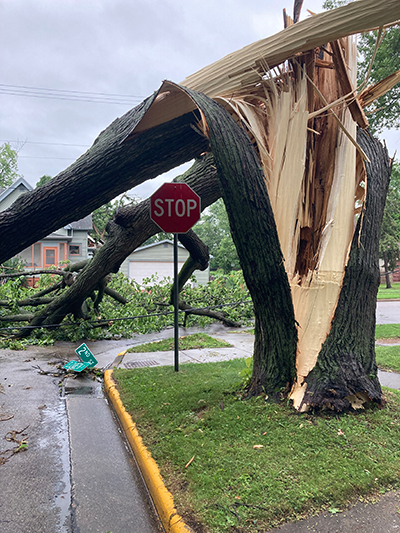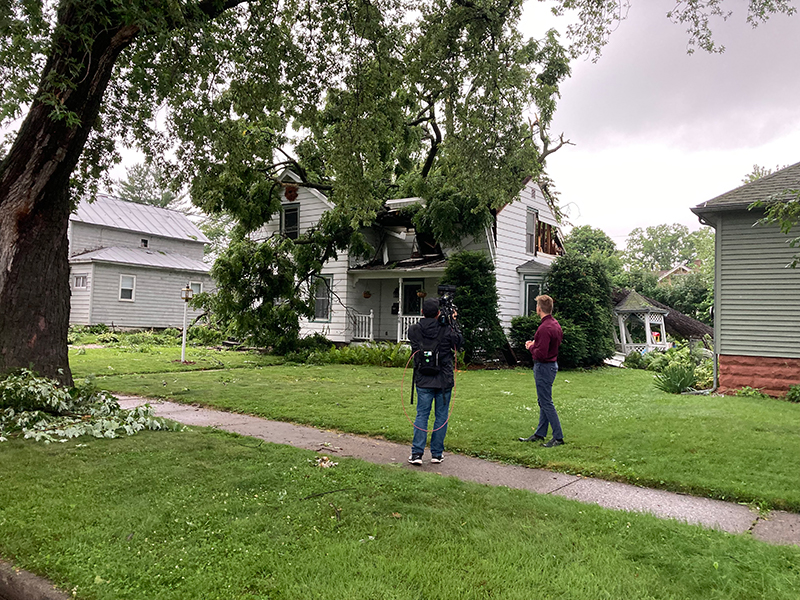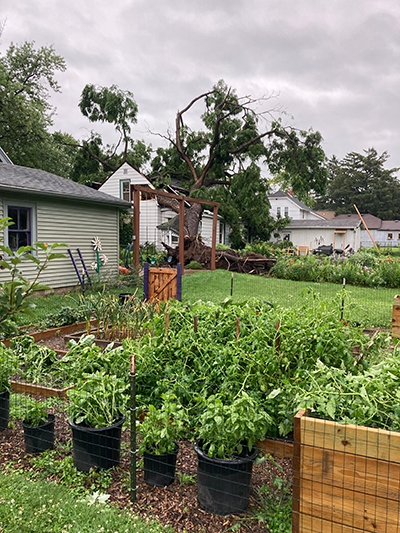Rick Eilertson is a Professional Engineer at AECOM
What is your role/who are you?
I’ve been involved with the Wisconsin Initiative on Climate Change Impacts (WICCI) since 2010 when I started serving as a member of the Stormwater Working Group and currently serve on the Infrastructure Working Group. I’ve worked for twelve years in the public sector as both a Public Works/Utilities Director and Environmental Engineer. I’ve also worked eighteen years as a Project Manager/Engineer in the private sector helping communities and businesses deal with aging infrastructure and plan retrofits to meet the current and future needs. I am active with the American Public Works Association (APWA) and serve as the Wisconsin Chapter’s liaison to the APWA Center for Sustainability.
What led you to take action and what actions did you take?

In my work I have seen severe damage to stormwater infrastructure and other roadway and public works infrastructure, primarily caused by the severe intensity of rainfall events that appears to be more commonplace each year. For example, Baraboo recently had a windshear event with over an inch of rain falling in seven minutes. Because of the short duration, it doesn’t fall nicely into the standard storm event descriptions we typically use, but it was the most intense rainfall event I have ever been present in. Unfortunately, we seem to be experiencing intense rainfall events like this more often and are trying to figure out how to deal with them. These extreme events are affecting communities and businesses by increasing costs for storm damage as well planning out replacement infrastructure that is more resilient to future extreme events.
Have you seen a regional difference in approaches?
Most of the communities I’ve been working with so far have been talking about how to respond to these extreme events, but aren’t sure how best to go about it and how much funding they should allocate. So far, they’ve primarily been in a reactive mode, just cleaning up after the storm events and talking about how bad it was. A few communities like the City of Madison have begun making ordinance updates to increase design requirements for new infrastructure. At the same time, they’re conducting numerous watershed studies in portions of the city that have known stormwater drainage problems so they can design retrofits to improve resiliency in the future.

Do you have any approaches that you are suggesting to people?
Not yet, but I think there has been a fair amount of interest. When I talk to communities about Daniel Wright’s work on the Wisconsin Rainfall Project, there is a lot of interest. Once the web portal for the rainfall data is publicly available, I and other consultants will be encouraging clients and communities to use that information and adopt requirements to go along with those updated rainfall events.
Once the data becomes available, what do you see as the next steps for municipalities?
The simplest way to use the data will be to incorporate it by ordinance. Right now, you can defer to the minimum Wisconsin Department of Natural Resources (WDNR) stormwater requirements for your stormwater ordinances or you can create specific requirements. WDNR’s guidance for stormwater management is for water quality and generally only addresses up to the 2-year design storm (about 2-3 inches/24-hour period). This doesn’t address intense events at all. Most communities design at least to the 10-year design storm, and a good majority have requirements to design to the 100-year design storm. The question really is, what is a 1-year design storm? A 10-year? That varies throughout the state and over time with future climate scenarios. Madison just updated their stormwater management ordinance that sets the guidance on what designs need to include. It can be a model for other communities. There also needs to be training for designers so they are able to plug that data into their models.
Does the rainfall data used by engineers need to be put in the context of a watershed approach?
Madison is starting to try and do work on a watershed approach, but that is tough for a developer on a one-acre parcel. It’s hard to really compel that developer to undertake a model that incorporates the whole watershed. Waukesha County has been doing some things like that. La Crosse County Highway Department is interested in it as well, but hasn’t yet been successful in getting higher standards or higher requirements for new developments. There’s a lot of these types of different approaches that are at least being talked about.

Do you have hope for the future?
Oh yes. There’s a lot of good folks out there and the tools for stormwater planning and design have been improving dramatically. If we can communicate and share our failures and successes, I think that we can go a long way in improving our future. We can make sure we understand what the risks are for certain types of projects and try to communicate those risks to the taxpayers, rate payers, decision-makers, and other stakeholders. The City of Middleton was successful at having these conversations around the flooding of Pheasant Branch Creek in 2018 and increased their stormwater utility fee dramatically to better fund the costs of the needed improvements.
I don’t think it helps to paint a doom and gloom picture. I think we need to paint a picture of reality. The more we can point out where the issues are and when they are happening—like when we have major events—and have a frank discussion about how our facilities are or aren’t holding up, the better off we’ll be.
The views and opinions expressed in this interview are those of the authors and do not represent official policy or position of the University of Wisconsin-Madison or the Wisconsin Initiative on Climate Change Impacts.
For More Information
Rick Eilertson, P.E.
(608) 402-5862
rick.eilertson@aecom.com